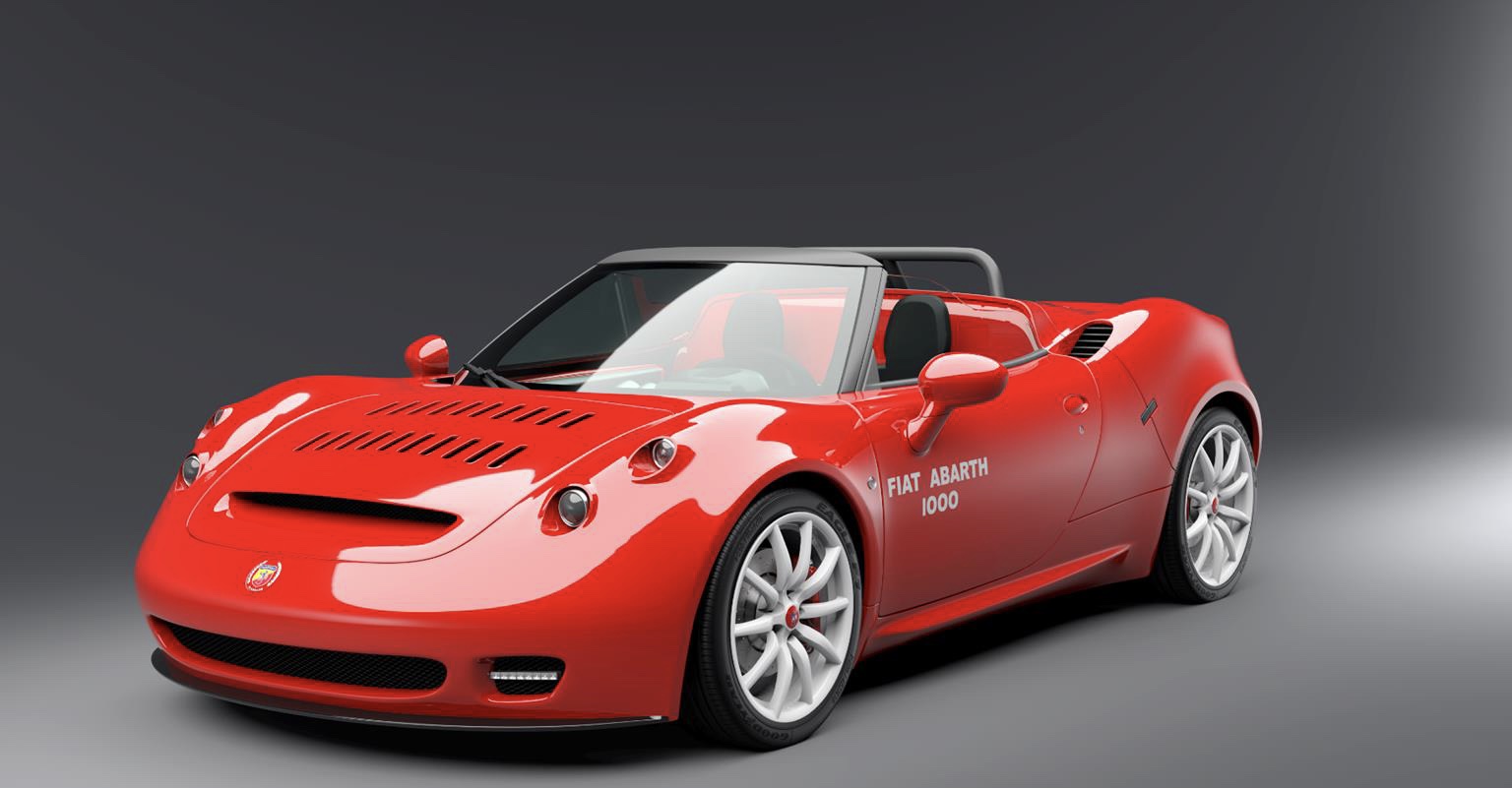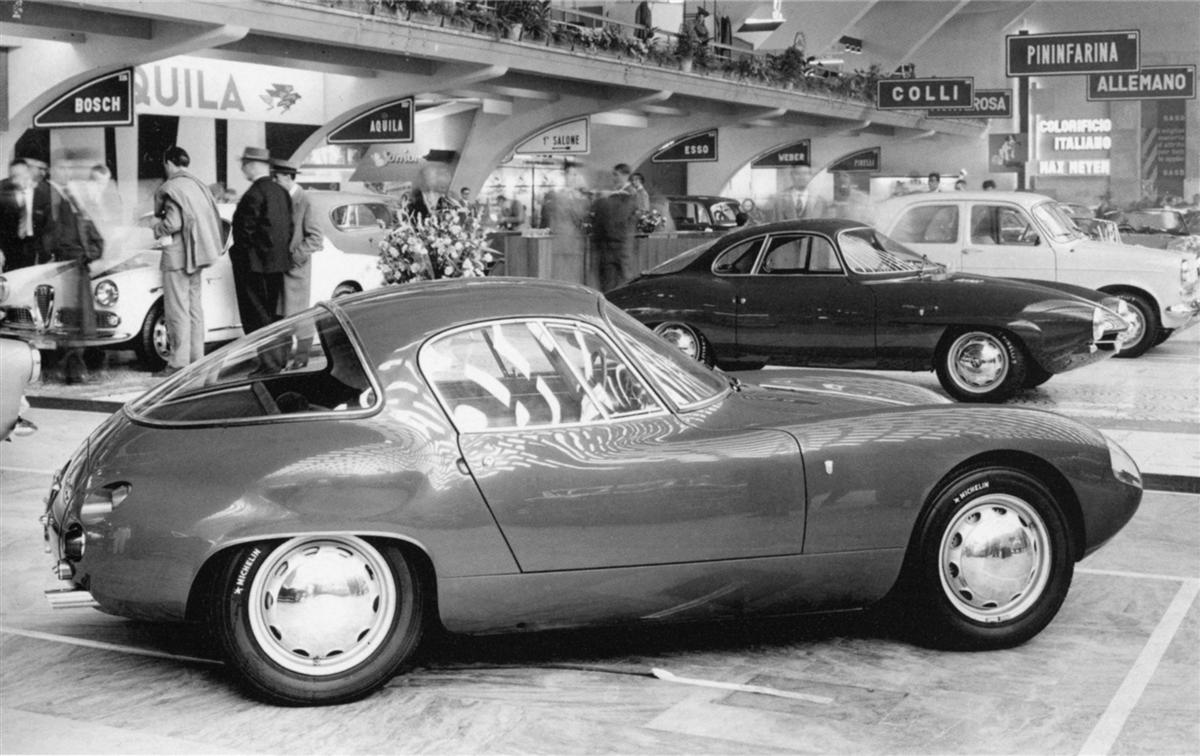The surprise!
When a prototype of a “new” Abarth 1000 SP suddenly appeared in Padua last year, we were also a little surprised. And somehow not totally thrilled either, a finger exercise, we thought, nothing more. But slowly the fog begins to clear – and we experience a surprise that we really would not have expected in this form. Abarth will build this car, in a small series.

But first let’s take a look back – this is going to be detailed, starting already in the mid-50s. In 1954, Abarth and Alfa Romeo had worked together for the first time, creating a rather idiosyncratic vehicle based on the Alfa Romeo 1900, which was dressed by Ghia. But things got really exciting in 1958, when a vehicle appeared at the Turin Motor Show, of which we do not even know exactly what its designation was: we will refer to it here as the Abarth-Alfa Romeo 1000. The body was designed by Bertone and drawn by Franco Scaglione.

Alfa Romeo contributed the platform. And it was very interesting, a lattice tube frame designed by Mario Colucci that weighed just 50 kilos. A one-litre four-cylinder engine was fitted inside, based on the 1.3-litre from the Giulietta. Alfa Romeo had made it a condition that the Abarth-Alfa should only be used in racing categories in which the Milanese had no ambitions, so the stroke was shortened to 58 millimetres. However, the small engine still produced 88 hp and was shifted via a 5-speed “System Porsche” gearbox. The car, which was only 3.69 metres long and 1.20 metres high, weighed 640 kilos. It is said that at least two, probably three examples were built – all of which crashed during the same test drives on the Avus in Berlin. The project was not pursued any further after that – it is not known what caused it to fail in the end. It is said that Abarth lacked the financial means for series production. Other sources describe Carlo Abarth as very stubborn – and still others describe the structures at Alfa Romeo at the time as too slow and too complicated.

But why is this Abarth-Alfa Romeo 1000 so important for automobile history? For two reasons: While working with Alfa Romeo, Carlo Abarth met Mario Colucci – and immediately wooed him away with a generously remunerated contract. Colucci, it must be remembered, had been an important man at Alfa Romeo, starting with the 1900, but it was above all to the Giulietta that he made a decisive contribution; the departure of the engineer hit the Milanese hard. And then there was the trellis frame chassis: Alfa Romeo had apparently not only invested a lot of time in it, but also money. And it was Abarth that profited most from this.

The first car Colucci designed in 1960 was the 750 Sport, an open car weighing just over 400 kilos with a trellis frame, which was capable of over 200 km/h with its 75 hp engine mounted in the middle. Abarth wanted to enter it in the 24 Hours of Le Mans that year, but the organisers refused to allow it to start for flimsy reasons. With the Fiat Abarth 1000 Spider Sport, which was used with different engines from 1962 onwards, Colucci was able to assert himself again, with a tubular frame and a mid-engine; because the vehicle weighed only 405 kilos, it was able to compete for the day’s victory, especially in hill climbs.

In 1966, the Fiat Abarth 1000 SP (SE04) was still a masterpiece in the spirit of Colucci, but the successor to the Spider Sport now had a polyester body and, according to the regulations, also had to be equipped with lights, windscreen, wipers and spare wheel. Although the power of the 1-litre engine increased to 104 hp, the car was also considerably heavier at 480 kilos. But especially for private drivers, the SE04 was an excellent sports car, and with a price of 5’500’000 Lire, it was not overly expensive. Probably more than 70 examples were built – which were very successful. And because “Fiat” was still written on the cars, Abarth earned a lot of money with every victory.

The first important success came at the 500 kilometre race on the Nürburgring on 4 September 1966: The Abarth 1000 SP driven by Herbert Müller and Klaus Steinmetz won the 1000cc class and was third overall. At the Aosta-Pila hill climb, which counted towards the Italian hill climb championship, Italian driver Leo Cella won the 1000 class a few days later. News of the two sudden successes began to bear fruit immediately, and Abarth received its first orders. After 50 units produced, Abarth received homologation for Group 4 Sport / Class 1000 in March 1968. Private drivers continued to achieve success with the SE04 well into the 1970s – and Carlo Abarth achieved his business goal of being able to sell customers a reliable winning car for racing.

In 1971, however, Carlo Abarth sold the naming rights of his company to Fiat; he died in Vienna in 1979. And we now turn the clocks further forward, somewhere in the late noughties. Giampaolo Dallara, who had left his mark on the Lamborghini Miura, among others, and founded his own company in 1972, thought hard about building a car that would bear his name. And he designed a monocoque made of carbon fibre-reinforced plastic for it that weighed just 65 kilos. Alfa Romeo was in the Dallara workshops in Varano de’ Melegari more frequently at the time for another project, first thinking of a small special series – and finally taking over the project altogether to create the wonderful Alfa Romeo 4C from it in 2011, which was then actually launched on the market in 2013.

But now things are getting very exciting. In 2007, the Fiat Group had revived the Abarth brand, and under Luca de Meo, the traditional company quickly became a success story again thanks to the pimped 500s. And apparently there were plans to use the Dallara chassis not only for the Alfa Romeo 4C, but also for an independent Abarth model. Deep down in the archives of FCA Heritage there are apparently plans from 2009 that went far beyond finger exercises by Roberto Giolito, the great designer of the Multipla and above all the new Fiat 500. We don’t know what the problem was at the time.
But now we have come full circle, in more ways than one. Because Abarth will actually build a small series of the 1000-SP prototype that was shown in Padua last year – based on the Alfa Romeo 4C. That means: 1.75 litre capacity, 240 hp, over 250 km/h fast. All you have to do is bring a used 4C to Abarth, and the conversion, including the glazing above the cockpit so typical of the Abarth 1000 SP, will be done in Turin. The price is not yet known, and the company does not yet want to commit to a number.

We have many Abarth stories with excellent pictures in our archives, a nice summary can be found here.





Be First to Comment